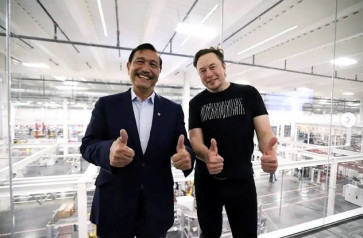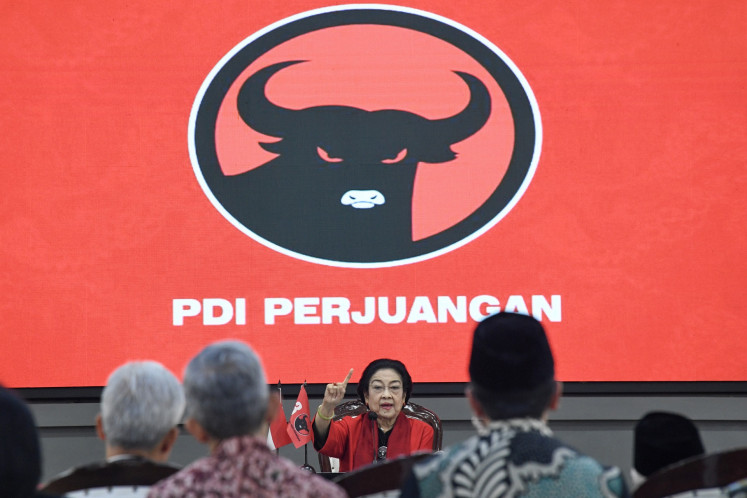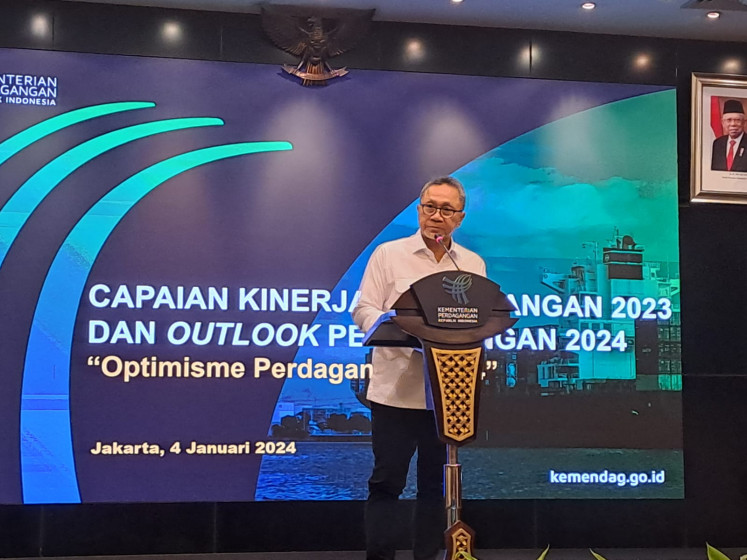Poor infrastructure may lead Indonesia to middle-income trap
This newspaper recently discussed the risk of Indonesiaâs economy falling victim to the so-called âmiddle-income trapâ
Change Size

T
his newspaper recently discussed the risk of Indonesia's economy falling victim to the so-called 'middle-income trap'.
Such a trap occurs when a rapidly growing economy stagnates at the middle-income level and fails to maintain its growth momentum to graduate into the ranks of high-income countries.
The concept of a middle-income trap is backed by empirical evidence. A study by the World Bank in 2011 found that of 101 middle-income countries in 1960, only 13 had become high-income countries by 2008. Countries in Latin America and the Middle East provide lucid illustrations. Most economies in these two regions reached middle-income status as early as the 1960s and have remained there ever since.
What about Indonesia? The same study showed we initially joined the middle-income group in 1996 but fell back after experiencing a major crisis in 1997/1998. It took us six years to re-join the league and we have been a middle-income country since then with a per capita income of US$3,420. The threshold for becoming a middle-income country is $1,036 and that of a high-income country is $12,616.
Keen observers of Indonesia's economy would agree that infrastructure is key to helping the country leap out of its current middle-income status. Indeed, a recent study by the International Monetary Fund (IMF) found that the highest risk exposure to Indonesia ' in terms of growth slowdown and middle-income trap ' is transport infrastructure.
People in China, unsurprisingly, have a wise, old saying about this: 'If you want to be rich, you must first build roads.'
But we do not need to travel far to realize that our infrastructure is in poor condition. From traffic gridlock to electricity blackouts to slow Internet connections, it's clear that our physical infrastructure has not been able to support the expanding economy and growing demands of the population. As a consequence, economic growth has been prevented from achieving its full potential.
Encouragingly, there are positive developments, despite the need to speed up progress. Investing in infrastructure has been a dominant national agenda item in the past few years.
But on top of infrastructure, Indonesia needs to invest in three other equally important things.
First, the financial system. We need to develop a financial market that enables funds to be allocated in the most efficient way. This includes elements such as a well-functioning securities market, a seamless payment system and an effective legal and regulatory framework.
As in many other developing economies, our financial system is dominated by banking institutions and this resulted in the so-called 'funding bottleneck'. Banks' main sources of funds are short-term deposits while the most productive use of these funds is generally in the form of long-term and risky projects. Long-term investors, such as pension funds and insurance firms, are yet to be actively involved in the country's underdeveloped debt markets.
Indonesia's debt market is indeed still in its early stages compared to other economies in Asia. The Jakarta stock market capitalization, which ranged from 40 percent of gross domestic product (GDP), also lagged behind its counterparts in the region, such as Thailand (69 percent), the Philippines (96 percent), or Malaysia (144 percent).
The second piece of investment is related to institutions. Its importance may not seem as obvious as building toll roads or installing new power plants. One may relegate such efforts to an afterthought or, worse, dismiss it altogether.
But it could not be further from the truth. Numerous studies have shown it is institutional problems, rather than resource constraints, that at times are the primary reason for failures in developing economies, including Indonesia. Investors and donor agencies often find themselves entangled in a web of poor regulations, bad coordination and a lack of commitment of public institutions to deliver much needed government services.
Last but certainly not least, is investment in human capital. An educated workforce is as critical as having a reliable telephone network to the economy. There is abundant scientific evidence that confirms the link between investment in education and higher economic prosperity.
Indonesia has the fourth largest education system in the world, yet in the most recent Program for International Student Assessment (PISA) report on 65 nations, Indonesia ranked last. In an era of knowledge-based economies and amid the global war for talent, it should be a major concern that our education system is struggling.
In the labor market, our workforce may still have an edge against its main competitors. Measured by a ratio of real wage to productivity, laborers in Indonesia are among the most competitive in the region. However, as we aspire to break into high-income status, we should no longer rely on cheap labor as a source of competitiveness. In fact, it is a typical route for a country to get trapped at the middle-income level.
As wages rise, manufacturers will find themselves unable to compete with lower-cost producers in export markets. Yet, they still lag behind the advanced economies in producing higher-value products. This is exactly the case with several countries in Latin America and the Middle East now 'stuck' at the middle-income level.
Qualified human capital will help our economy switch to a 'new growth model' that emphasizes innovation and increased industrial capability.
In this model, an ecosystem exists where elements such as a diffusion of technology, research and development, intellectual property rights and risk capital interact with each other without barriers and form a more sustainable engine of growth.
_______________________
Investors and donor agencies often find themselves entangled in a web of poor regulations.
___________________
The writer is an economist at Bank Indonesia (BI), Jakarta. The views expressed are his own.









